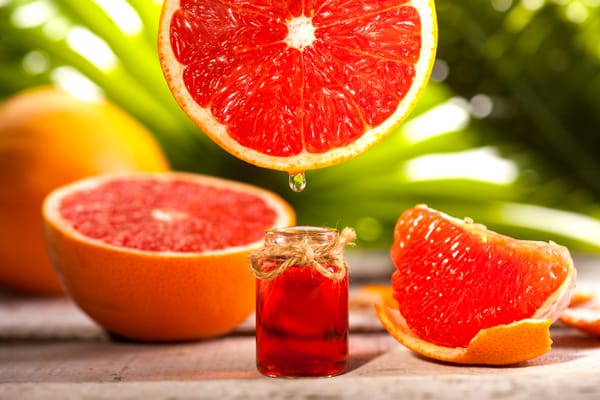Best Herb for Pain Relief: Discover Natural Solutions
Find out what is the best herb for pain relief and how it can help you manage chronic discomfort naturally.

Ever wonder what is the best herb for pain relief? If you're like me, tired of popping pills and seeking a more natural way to ease that nagging joint or muscle ache, you're in good company. In fact, herbal remedies have been used for centuries to soothe various types of pain.
Imagine a world where nature's bounty provides all the relief you need without harsh side effects. That's not just wishful thinking; it's entirely possible! Herbs like turmeric and ginger are gaining popularity as potent alternatives to over-the-counter meds.
The truth is, understanding which herbs work best involves knowing their active compounds and how they reduce inflammation. Ready to explore these powerful natural options?
Table of Contents:
- Best Herbs for Natural Pain Relief
- How These Herbs Help Reduce Pain and Inflammation
- Using Herbs Safely and Effectively for Pain Management
- Other Natural Methods for Pain Relief
- Conclusion
Best Herbs for Natural Pain Relief
When it comes to natural pain management, herbs are a game-changer. They've been used for centuries to relieve pain and reduce inflammation. And the best part? They're gentle on your body and can be used long-term without the risk of dependence or nasty side effects.
Turmeric, Ginger, Boswellia, Devil's Claw, Capsaicin
My top picks for natural pain relief are turmeric, ginger, boswellia, devil's claw, and capsaicin. I've personally experienced the benefits of these powerful herbs. Turmeric, the golden spice, is a natural pain reliever that's been used in Ayurvedic medicine for thousands of years. It's loaded with curcumin, a compound that has potent anti-inflammatory properties. I add it to my smoothies, curries, and even my coffee for a daily dose of pain relief. Ginger is another favorite of mine. It's not just for settling an upset stomach. Ginger contains gingerols, which are powerful pain-fighting compounds. A study found that ginger extract could reduce muscle pain caused by exercise. I love sipping on ginger tea or adding fresh ginger to my stir-fries. Boswellia, also known as Indian frankincense, is a lesser-known herb that packs a punch when it comes to pain relief. It contains boswellic acids that can reduce inflammation and relieve pain associated with conditions like arthritis and asthma. I take a boswellia supplement daily to keep my inflammation in check. Devil's claw, despite its scary name, is a powerful pain reliever. It's native to South Africa and has been used for centuries to treat pain and inflammation. Studies have shown that devil's claw can be effective in reducing pain associated with osteoarthritis and lower back pain. I use a devil's claw tincture when I'm experiencing acute pain. Finally, there's capsaicin, the compound that gives chili peppers their heat. When applied topically, capsaicin can help relieve pain by reducing the amount of substance P, a neurotransmitter that sends pain signals to the brain. I use a capsaicin cream on my sore muscles after a tough workout. These herbs are my go-to natural remedies for pain management. They're safe, effective, and can be used long-term to keep pain at bay. Give them a try and see how they work for you.
How These Herbs Help Reduce Pain and Inflammation
So, how exactly do these herbs work their magic? It all comes down to their active compounds and how they interact with our bodies.
Curcumin in Turmeric, Gingerols in Ginger, Boswellic Acids in Boswellia, Harpagoside in Devil's Claw, Capsaicin in Chili Peppers
Let's start with curcumin, the star compound in turmeric. Curcumin works by blocking NF-κB, a molecule that turns on genes related to inflammation. By reducing NF-κB, curcumin can help reduce chronic inflammation and pain. A 2017 study found that curcumin was effective in reducing pain and improving function in people with osteoarthritis. Gingerols, the active compound in ginger, work similarly to curcumin. They can reduce inflammation by inhibiting pro-inflammatory cytokines like IL-1 and TNF-alpha. A study found that ginger extract was as effective as ibuprofen in reducing pain in people with osteoarthritis. Boswellic acids in boswellia work by inhibiting 5-LOX, an enzyme that produces leukotrienes, which are inflammatory compounds. By reducing leukotrienes, boswellic acids can help reduce inflammation and pain. A 2011 study found that boswellia extract was effective in reducing pain and improving function in people with osteoarthritis. Harpagoside, the active compound in devil's claw, works by inhibiting COX-2 and nitric oxide synthase, two enzymes involved in inflammation. A 2004 study found that devil's claw extract was effective in reducing pain and improving function in people with osteoarthritis of the knee or hip. Finally, capsaicin in chili peppers works by depleting substance P, a neurotransmitter that sends pain signals to the brain. By reducing substance P, capsaicin can help relieve pain. A 2009 review found that topical capsaicin was effective in reducing pain associated with osteoarthritis, rheumatoid arthritis, and fibromyalgia. These active compounds are the reason why these herbs are so effective at reducing pain and inflammation. They work by targeting specific pathways in the body that are involved in the inflammatory process. By reducing inflammation, these herbs can help alleviate chronic pain and improve overall quality of life.
Key Takeaway:
For natural pain relief, try turmeric, ginger, boswellia, devil's claw, and capsaicin. These herbs reduce inflammation and are gentle on your body. Incorporate them into your diet or use topically to manage chronic pain without side effects.
Using Herbs Safely and Effectively for Pain Management
When it comes to managing pain naturally, herbal supplements can be a game-changer. But here's the thing: you can't just start popping herbs like candy and expect miracles. Trust me, I've been there. As someone who's dealt with chronic pain for years, I know how tempting it is to try every natural remedy under the sun. But I've learned the hard way that not all herbs are created equal - and some can even be dangerous if used incorrectly. That's why the first step in using herbs for pain relief is to consult with a qualified healthcare professional who's knowledgeable about alternative therapies. They can help you determine which herbs are safe and appropriate for your specific condition, and guide you on proper dosage.
Consult with Healthcare Provider
I can't stress this enough: before starting any herbal supplement regimen, you need to talk to your doctor or a qualified healthcare practitioner. They can assess your individual needs and make personalized recommendations based on your medical history, current medications, and overall health status. This is especially important if you have any pre-existing health conditions or are taking prescription drugs, as some herbs can interact with medications or exacerbate certain illnesses. For example, ginger and turmeric may enhance the effect of blood thinners, while kava can worsen liver problems. Your healthcare provider can also help you navigate the often-confusing world of herbal supplements and ensure you're getting high-quality products from reputable sources. They may even be able to recommend specific brands or formulations that have been tested for purity and potency.
Proper Dosage
Once you've gotten the green light from your healthcare provider, it's crucial to follow their dosage instructions to the letter. Just because a supplement is "natural" doesn't mean it's safe to take in unlimited quantities. In fact, taking too much of certain herbs can be just as dangerous as taking too little. For instance, high doses of turmeric can cause gastrointestinal issues like nausea and diarrhea, while excessive amounts of kava can lead to liver damage. On the flip side, taking too low a dose may not provide the desired pain-relieving effects. That's why it's important to work closely with your healthcare practitioner to find the optimal therapeutic dose for your individual needs.
Potential Interactions
Another key consideration when using herbs for pain management is the potential for interactions with other substances. Many people assume that because something is natural, it's automatically safe to combine with anything else - but that's simply not true. Herbs can interact with prescription and over-the-counter medications, as well as with other supplements and even certain foods. For example, St. John's wort can reduce the effectiveness of birth control pills and antidepressants, while garlic can increase the risk of bleeding when taken with blood thinners. That's why it's so important to disclose all the supplements and medications you're taking to your healthcare provider, even if they seem unrelated to your pain condition. They can help you identify any potential interactions and adjust your regimen accordingly.
Quality and Purity of Supplements
Finally, when it comes to using herbs for pain relief, quality matters. Not all supplements are created equal, and some may contain fillers, contaminants, or even undisclosed ingredients that can be harmful to your health. To ensure you're getting a high-quality product, look for supplements that have been independently tested by third-party organizations like ConsumerLab or NSF International. These certifications indicate that the product has been evaluated for purity and potency, and that it contains the ingredients listed on the label in the amounts claimed. You should also choose supplements from reputable brands that have a track record of producing safe and effective products. Don't be swayed by flashy marketing claims or too-good-to-be-true promises - if it sounds too good to be true, it probably is. In my experience, it's worth investing in quality supplements from trusted sources. Not only do they tend to be more effective in managing pain symptoms, but they also give me peace of mind knowing that I'm putting something safe and pure into my body.
Other Natural Methods for Pain Relief
While herbs can be a powerful tool in managing pain naturally, they're not the only option. There are plenty of other non-pharmacological approaches that can help alleviate discomfort and improve overall quality of life. As someone who's tried just about every natural pain relief method out there, I can attest to the fact that what works for one person may not work for another. It's all about finding the right combination of therapies that address your unique needs and preferences. That being said, here are a few of my favorite natural pain management techniques that I've found to be particularly effective:
Essential Oils
I've always been a big fan of aromatherapy, and essential oils have become a staple in my pain relief toolkit. There's just something about the soothing scent of lavender or the invigorating aroma of peppermint that instantly puts me at ease and helps me forget about my aches and pains. But essential oils aren't just about smelling good - they also have powerful therapeutic properties that can help alleviate pain and inflammation. For example, a 2014 study found that topical application of lavender oil was effective in reducing migraine headache pain, while another study showed that peppermint oil can help relieve tension headaches and neck pain. Other essential oils that have been shown to have pain-relieving properties include eucalyptus, ginger, and frankincense. I like to mix a few drops of my favorite oils with a carrier oil like coconut or jojoba and massage it into sore muscles or achy joints. The combination of the soothing scent and the gentle massage always leaves me feeling more relaxed and less pain.
Massage Therapy
Speaking of massage, it's another natural pain relief method that I swear by. There's nothing quite like the feeling of skilled hands kneading away tension and soreness, leaving you feeling loose and limber. But massage isn't just a feel-good indulgence - it's also been shown to have significant pain-relieving effects. A 2017 systematic review found that massage therapy can help reduce pain and improve function in people with chronic low back pain, while another study showed that regular massage can alleviate symptoms of fibromyalgia. Massage works by increasing blood flow to sore muscles, reducing inflammation, and promoting relaxation. It can also help release endorphins, the body's natural pain-relieving chemicals, leading to an overall sense of well-being. If you're dealing with chronic pain, I highly recommend incorporating regular massage into your self-care routine. Whether you opt for a professional massage therapist or enlist the help of a partner or friend, the benefits are well worth the investment.
Acupuncture
I'll admit, I was a bit skeptical about acupuncture at first. The thought of having tiny needles inserted into my skin didn't exactly sound like a relaxing experience. But after hearing rave reviews from friends and fellow chronic pain sufferers, I decided to give it a try - and I'm so glad I did. Acupuncture is a traditional Chinese medicine technique that involves stimulating specific points on the body with thin needles. The theory behind it is that by balancing the flow of energy (or "qi") in the body, you can alleviate pain and promote healing. While the exact mechanisms of how acupuncture works are still being studied, there's no denying that it can be an effective tool for managing pain. A 2015 systematic review found that acupuncture can help reduce chronic pain from conditions like arthritis, headaches, and back pain, while another study showed that it can be effective in managing menstrual cramps. If you're considering trying acupuncture for pain relief, be sure to find a licensed and experienced practitioner who uses sterile, disposable needles. And don't worry - the needles are so thin that most people barely feel them being inserted.
Exercise
When you're dealing with chronic pain, the last thing you probably want to do is exercise. But as someone who's learned the hard way, staying active is one of the best things you can do for your body and mind. Exercise helps reduce pain in a number of ways. It increases blood flow to sore muscles, reduces inflammation, and releases endorphins, the body's natural painkillers. It also helps improve flexibility, strength, and overall function, making it easier to perform daily activities with less pain. Of course, the type and intensity of exercise will depend on your individual needs and limitations. Low-impact activities like swimming, cycling, and yoga are often good options for people with chronic pain, as they put less stress on the joints than high-impact exercises like running or jumping. The key is to start slowly and listen to your body. If something hurts, stop or modify the movement. And be sure to consult with your healthcare provider or a physical therapist before starting any new exercise program, especially if you have a pre-existing condition.
Heat and Cold Therapy
Finally, let's not forget about the power of good old-fashioned heat and cold therapy. Applying heat or cold to sore muscles or achy joints can help alleviate pain and promote healing in a simple, non-invasive way. Heat therapy works by increasing blood flow to the affected area, which can help reduce stiffness and promote relaxation. It's often used for chronic muscle pain or arthritis. You can apply heat using a heating pad, warm compress, or even a hot bath or shower. Cold therapy, on the other hand, works by reducing inflammation and numbing pain. It's often used for acute injuries like sprains or strains, as well as for conditions like headaches or menstrual cramps. You can apply cold using an ice pack, frozen gel pack, or even a bag of frozen vegetables wrapped in a towel. The key is to use the right temperature for the right amount of time. For heat therapy, aim for a temperature that feels warm but not hot, and apply for no more than 20 minutes at a time. For cold therapy, use a temperature that feels cool but not painful, and apply for no more than 15 minutes at a time. And of course, be sure to protect your skin by using a barrier like a towel or cloth between the heat or cold source and your skin. And if you have any concerns or pre-existing conditions, be sure to check with your healthcare provider before using heat or cold therapy.
Key Takeaway:
To manage pain with herbs, always consult a healthcare professional first. They can guide you on safe choices and proper dosages to avoid harmful interactions or side effects. High-quality supplements are essential for effectiveness and safety.
Conclusion
So there you have it—the lowdown on what is the best herb for pain relief. From turmeric’s curcumin reducing inflammation to ginger’s soothing properties tackling arthritis pains, these herbs pack quite a punch!
If you've always relied on conventional methods but crave something different—something natural—you might find your answer here with herbal remedies. These aren’t just age-old tales but proven solutions backed by modern research.
Your journey toward better health doesn’t end here; it evolves continually with choices that align closer with nature each day. Embrace this shift because managing pain shouldn’t mean compromising well-being!




